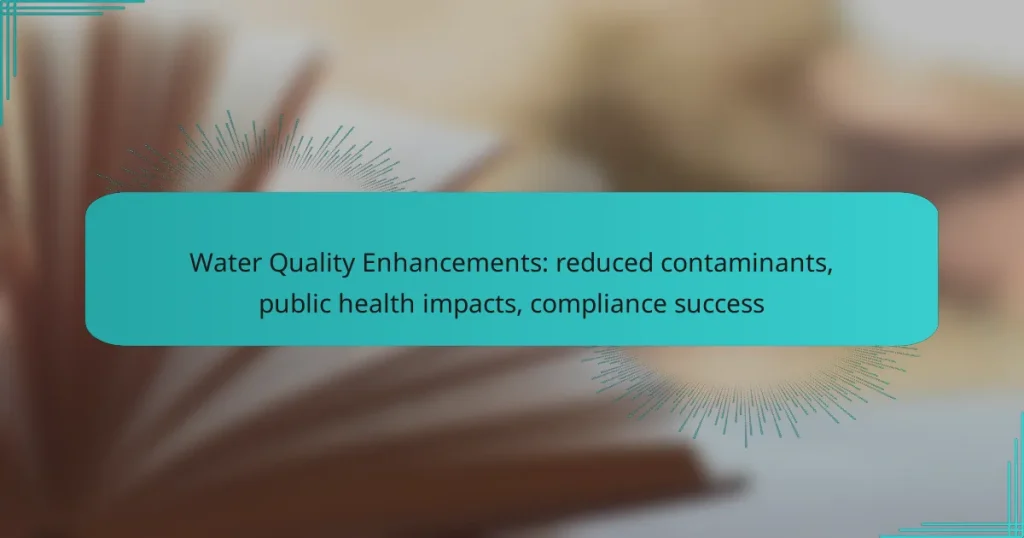Enhancing water quality is crucial for public health and environmental compliance, as it involves the reduction of harmful contaminants through advanced treatment technologies. Methods such as filtration, UV disinfection, and reverse osmosis play a vital role in eliminating pollutants like heavy metals and microbial pathogens. By improving water quality, communities can mitigate health risks and ensure adherence to safety standards, ultimately fostering a healthier population.
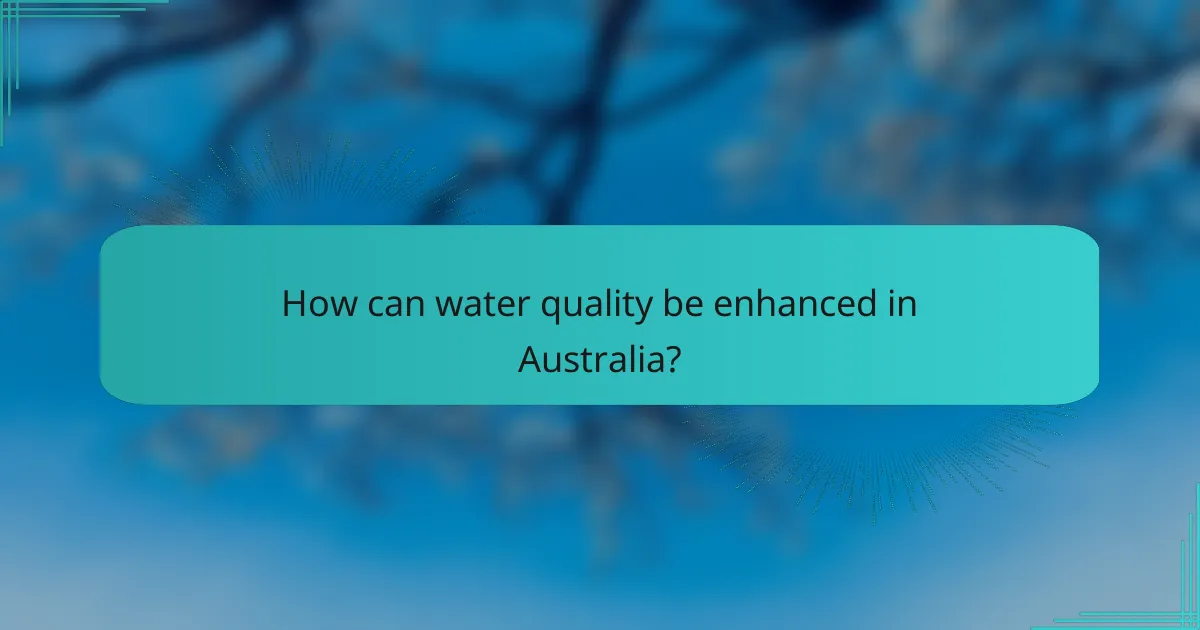
How can water quality be enhanced in Australia?
Enhancing water quality in Australia involves implementing various technologies and practices that reduce contaminants and improve public health. Key methods include advanced filtration systems, UV disinfection, reverse osmosis, activated carbon treatment, and rainwater harvesting systems.
Advanced filtration systems
Advanced filtration systems utilize multiple layers of filters to remove impurities from water. These systems can effectively reduce sediments, bacteria, and other contaminants, ensuring cleaner water for consumption and use.
Common types include membrane filters, which can capture particles as small as a few microns. When selecting a system, consider the specific contaminants present in your water supply and choose a filter that targets those effectively.
UV disinfection methods
UV disinfection methods use ultraviolet light to kill or inactivate harmful microorganisms in water. This technology is effective against bacteria, viruses, and protozoa without adding chemicals.
For optimal results, water should be pre-filtered to remove larger particles that can shield pathogens from UV light. Systems are available for both residential and commercial applications, making them versatile for various needs.
Reverse osmosis technology
Reverse osmosis (RO) technology forces water through a semi-permeable membrane, removing a wide range of contaminants, including salts, heavy metals, and chemicals. This method is highly effective for producing purified drinking water.
While RO systems can be more expensive to install and maintain, they provide significant long-term benefits in water quality. It’s essential to regularly replace the membrane and filters to ensure continued effectiveness.
Activated carbon treatment
Activated carbon treatment involves using carbon filters to adsorb organic compounds, chlorine, and other impurities from water. This method is particularly effective for improving taste and odor.
Systems can be point-of-use, such as under-sink filters, or whole-house setups. Regular maintenance is crucial, as carbon filters need replacement to maintain their efficacy and prevent bacterial growth.
Rainwater harvesting systems
Rainwater harvesting systems collect and store rainwater for various uses, including irrigation and non-potable applications. This practice can reduce reliance on municipal water supplies and improve sustainability.
When implementing a rainwater harvesting system, ensure proper filtration and treatment to meet health standards if the water is intended for drinking. Local regulations may dictate specific requirements for installation and maintenance.
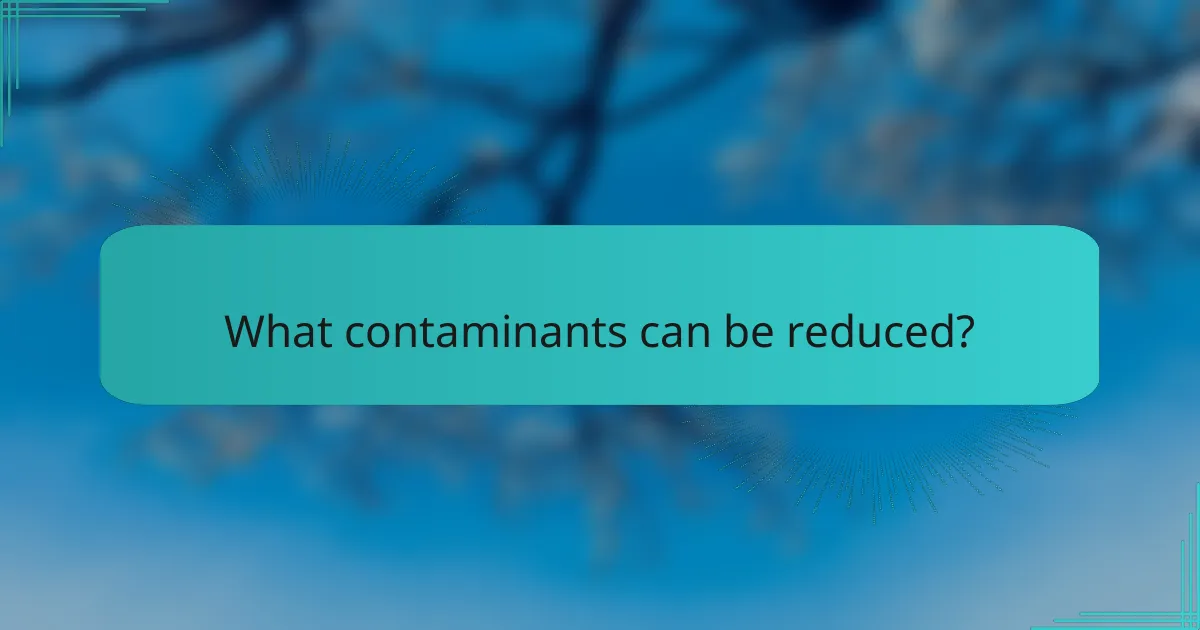
What contaminants can be reduced?
Water quality enhancements can effectively reduce various contaminants, improving public health and ensuring compliance with safety standards. Key contaminants include heavy metals, pesticides, microbial pathogens, and chlorine byproducts, each requiring specific treatment methods for effective reduction.
Heavy metals
Heavy metals such as lead, arsenic, and mercury can pose serious health risks, including neurological damage and developmental issues. Common reduction methods include reverse osmosis and ion exchange, which can significantly lower concentrations of these metals in drinking water.
Regular testing is essential to monitor heavy metal levels, especially in areas near industrial sites or old plumbing systems. Consumers should consider using certified filtration systems that meet national safety standards for heavy metal removal.
Pesticides
Pesticides can contaminate water sources through agricultural runoff, leading to potential health risks like endocrine disruption and cancer. Advanced filtration systems, such as activated carbon filters, are effective in reducing pesticide levels in drinking water.
To minimize pesticide contamination, homeowners should be aware of local agricultural practices and consider using water treatment solutions that specifically target pesticide removal. Regular water quality testing can help identify pesticide presence and inform necessary actions.
Microbial pathogens
Microbial pathogens, including bacteria, viruses, and protozoa, can lead to waterborne diseases. Effective reduction methods include chlorination, UV treatment, and filtration systems designed to eliminate these pathogens from water supplies.
It is crucial to ensure that water treatment systems are regularly maintained and tested, especially in areas with known contamination issues. Boiling water can also be a reliable short-term solution to eliminate pathogens during emergencies.
Chlorine byproducts
Chlorine byproducts, such as trihalomethanes (THMs), can form when chlorine used for disinfection reacts with organic matter in water. These byproducts are associated with various health risks, including cancer. Advanced oxidation processes and activated carbon filtration can effectively reduce these contaminants.
Water suppliers should monitor chlorine levels and byproduct formation to ensure compliance with safety regulations. Homeowners can consider installing point-of-use filters that specifically target chlorine byproducts to enhance water quality at the tap.
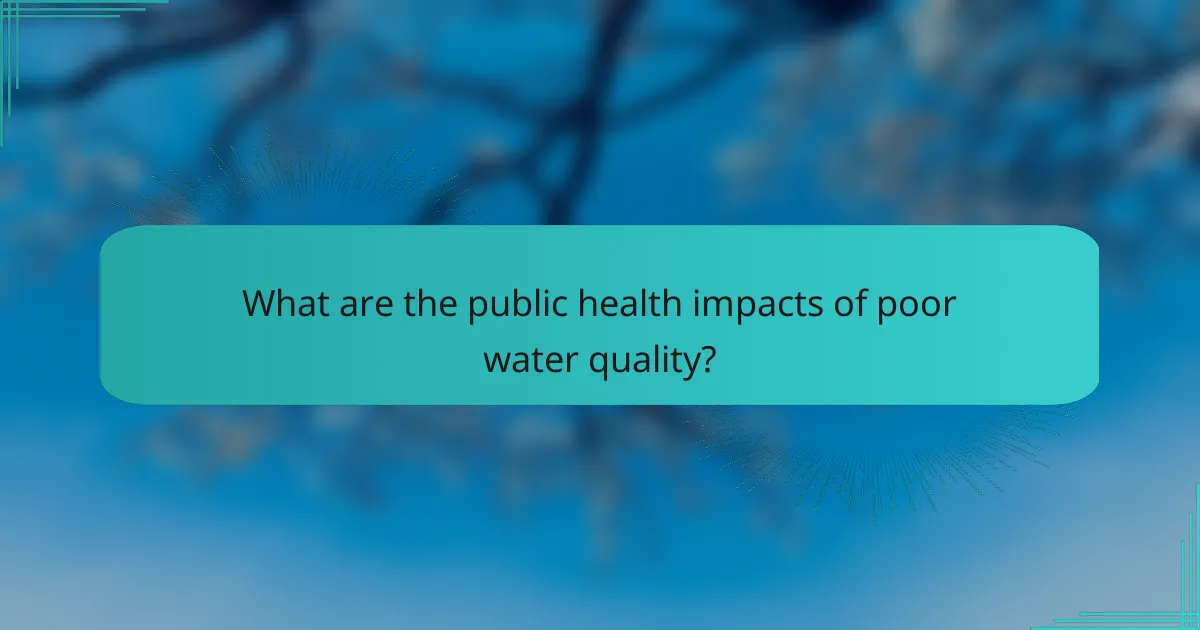
What are the public health impacts of poor water quality?
Poor water quality can lead to significant public health issues, including increased disease transmission and long-term health complications. Contaminated water sources expose populations to harmful pathogens and chemicals, which can have immediate and lasting effects on health.
Increased disease risk
Contaminated water is a major vector for various diseases, including gastrointestinal infections, cholera, and dysentery. When water supplies are tainted with bacteria, viruses, or parasites, the risk of outbreaks rises, particularly in areas with inadequate sanitation. Regular testing and treatment of water sources are crucial to mitigate these risks.
For example, communities with poor water treatment facilities may experience disease outbreaks during heavy rainfall when runoff increases contamination levels. Ensuring access to clean water is essential for reducing these health risks.
Long-term health effects
Long-term exposure to contaminated water can lead to chronic health issues, such as kidney damage, developmental delays in children, and increased cancer risk. Chemicals like heavy metals and pesticides can accumulate in the body over time, causing serious health complications. Monitoring and regulating water quality can help prevent these detrimental effects.
Individuals who have been exposed to contaminated water may not see immediate symptoms, which can lead to a false sense of security. Regular health screenings and awareness of local water quality reports are important for early detection of potential health issues.
Vulnerable populations
Certain groups, including children, the elderly, and those with pre-existing health conditions, are particularly susceptible to the impacts of poor water quality. These populations may experience more severe health consequences from contaminants due to their weaker immune systems. Targeted interventions are necessary to protect these vulnerable communities.
Efforts to improve water quality should prioritize access for at-risk populations, ensuring they have safe drinking water and sanitation facilities. Community education on the importance of water quality can empower residents to advocate for better resources and infrastructure.

How to ensure compliance with water quality regulations?
Ensuring compliance with water quality regulations involves adhering to established standards, conducting regular testing, and maintaining thorough documentation. This process is crucial for protecting public health and meeting legal requirements.
Regular testing protocols
Implementing regular testing protocols is essential for monitoring water quality and detecting contaminants. Testing should occur at consistent intervals, typically monthly or quarterly, depending on the water source and usage. Common tests include checking for bacteria, heavy metals, and chemical pollutants.
Utilizing accredited laboratories for testing ensures reliability and accuracy. It’s also beneficial to establish a baseline of water quality data to track changes over time and respond promptly to any deviations.
Understanding Australian standards
In Australia, water quality standards are governed by the National Water Quality Management Strategy (NWQMS) and specific state regulations. These standards outline acceptable limits for various contaminants and are designed to protect human health and the environment.
Familiarizing yourself with these standards is crucial for compliance. Regularly reviewing updates and amendments to regulations can help ensure that your testing and treatment processes remain aligned with current requirements.
Documentation and reporting
Thorough documentation and reporting are vital for demonstrating compliance with water quality regulations. Keeping detailed records of testing results, maintenance activities, and any corrective actions taken is essential for accountability.
Establish a systematic approach to documentation, including a schedule for reports and audits. This not only aids in compliance but also enhances transparency and builds trust with the community and regulatory bodies.
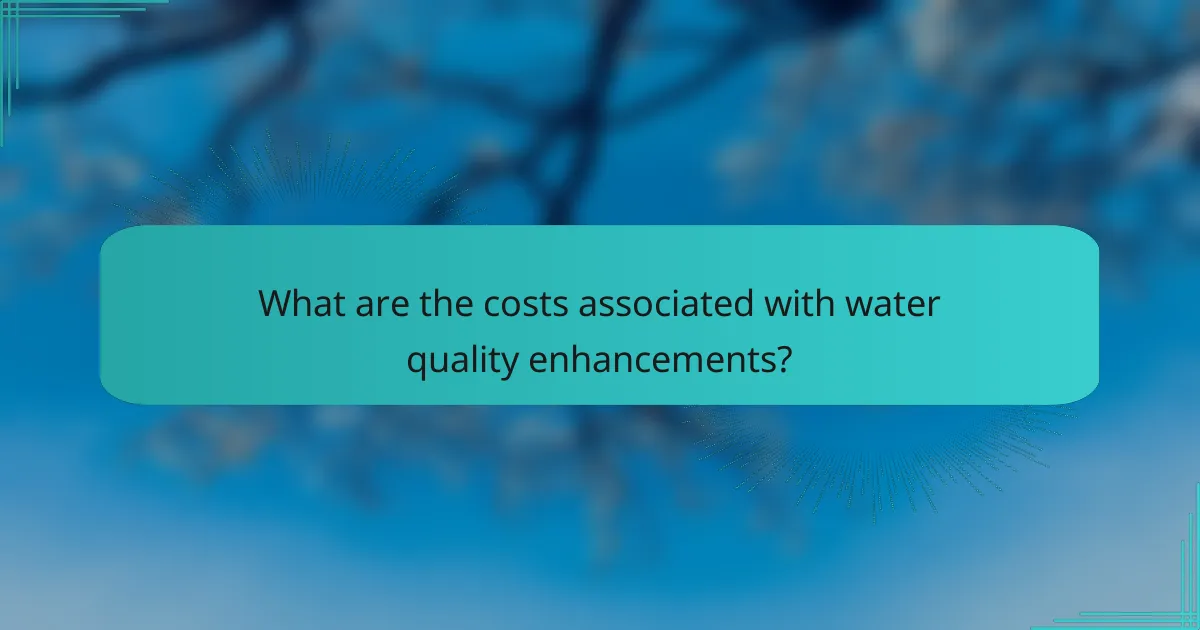
What are the costs associated with water quality enhancements?
The costs associated with water quality enhancements can vary significantly based on the type of improvements being implemented. Key factors include installation expenses, ongoing maintenance, and potential regulatory compliance costs.
Installation costs
Installation costs for water quality enhancements typically encompass the purchase of equipment, labor, and any necessary infrastructure modifications. For instance, installing filtration systems can range from a few thousand to tens of thousands of dollars, depending on the scale and technology used.
When planning for installation, consider factors such as the existing water system, the contaminants being targeted, and local labor rates. It’s crucial to obtain multiple quotes from contractors to ensure competitive pricing and to account for any unexpected expenses that may arise during installation.
Additionally, some municipalities may offer financial incentives or grants for water quality improvements, which can help offset installation costs. Researching local programs can provide significant savings and support for your project.
